Abstract
S. neavei, the vector of onchocerciasis, has been virtually eradicated from Kenya by larviciding measures in which DDT was used. Only a very small area remains infested and this is in the course of being treated by the Uganda medical authorities as it is part of a much larger focus occurring in that country. An account is given of the various surveys which have been carried out during the last ten years in Nyanza Province, involving 15 000 square miles (about 40 000 km2), and survey techniques are described. An account is given of the eradication measures carried out in North and South Nyanza, and techniques in connexion with dosing and checking operations are described. Costs for both surveys and eradication schemes are given, and minimum requirements for transport are indicated.
Full text
PDF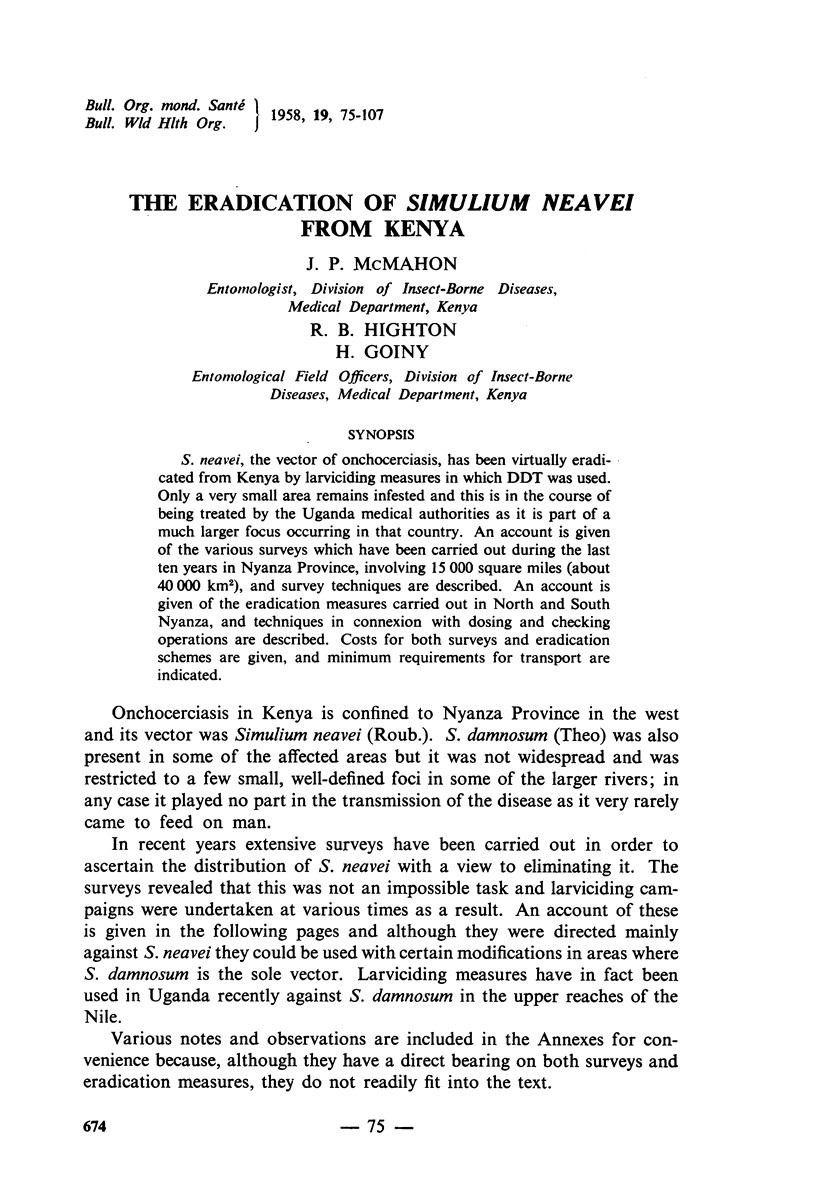
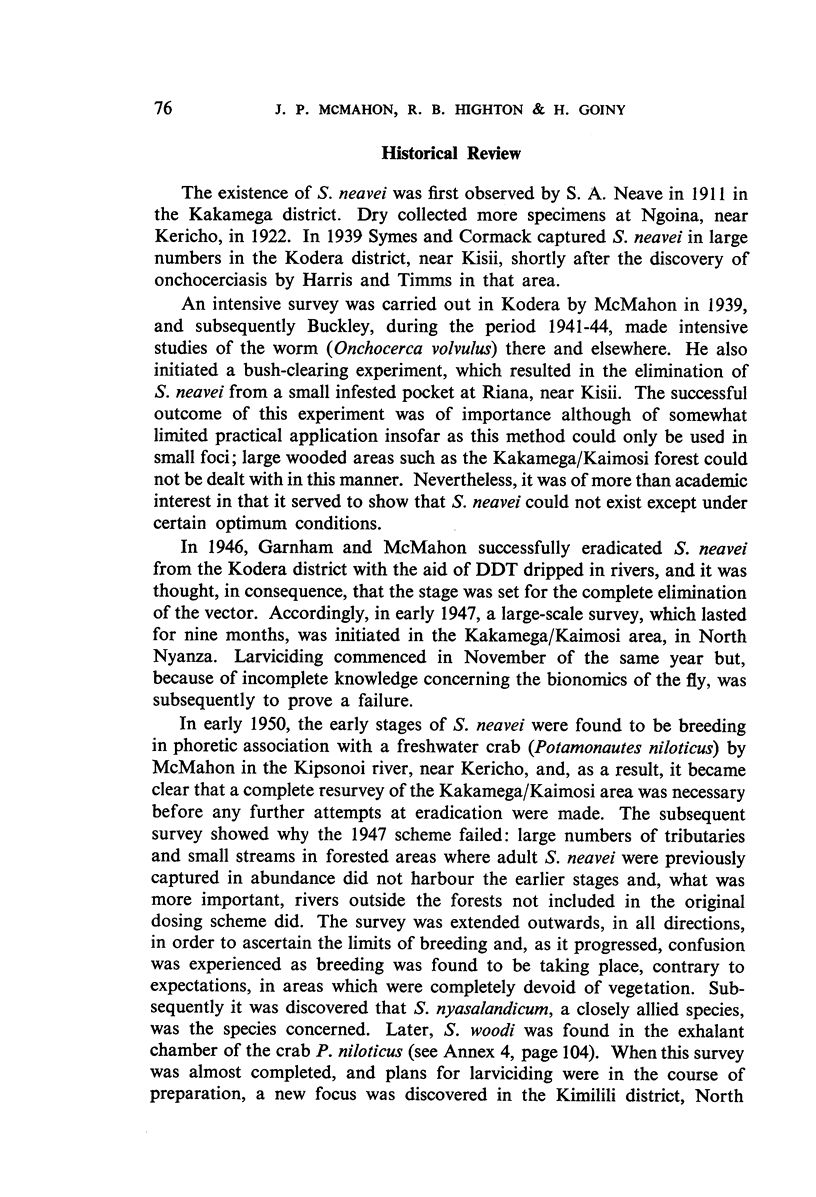
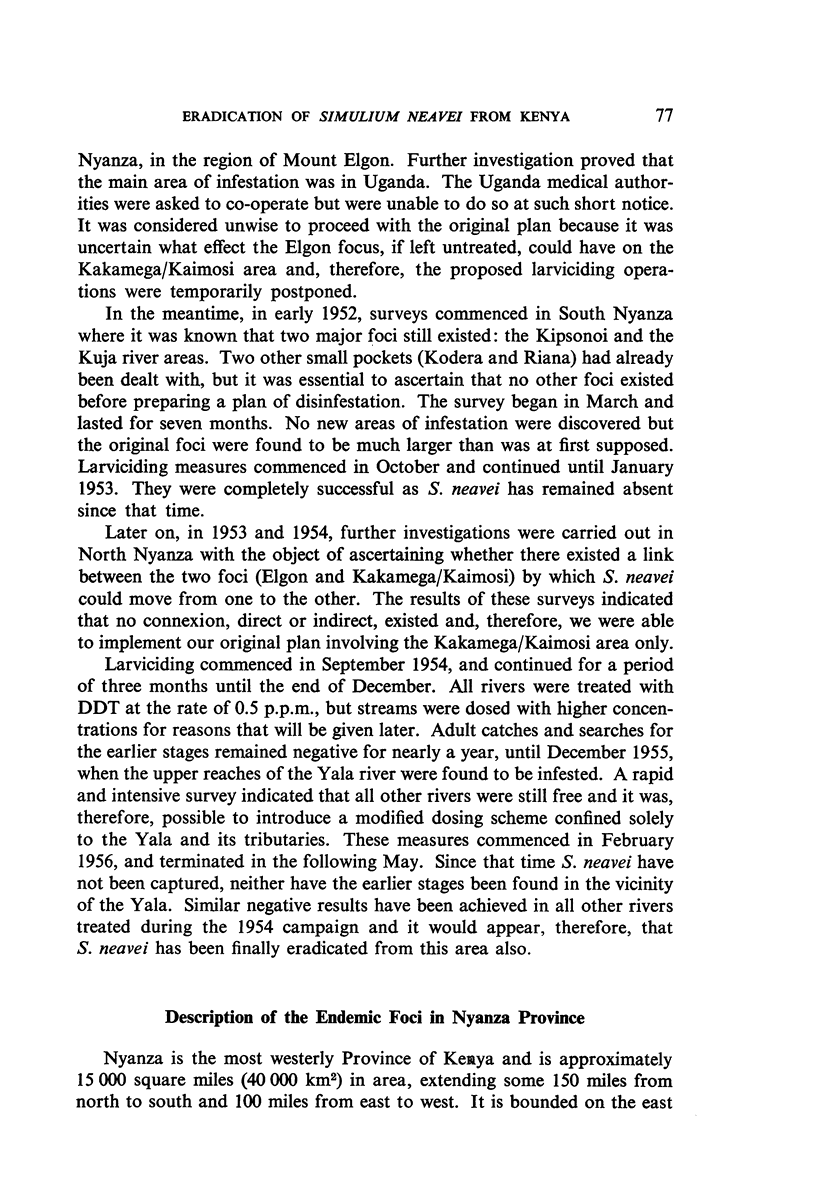
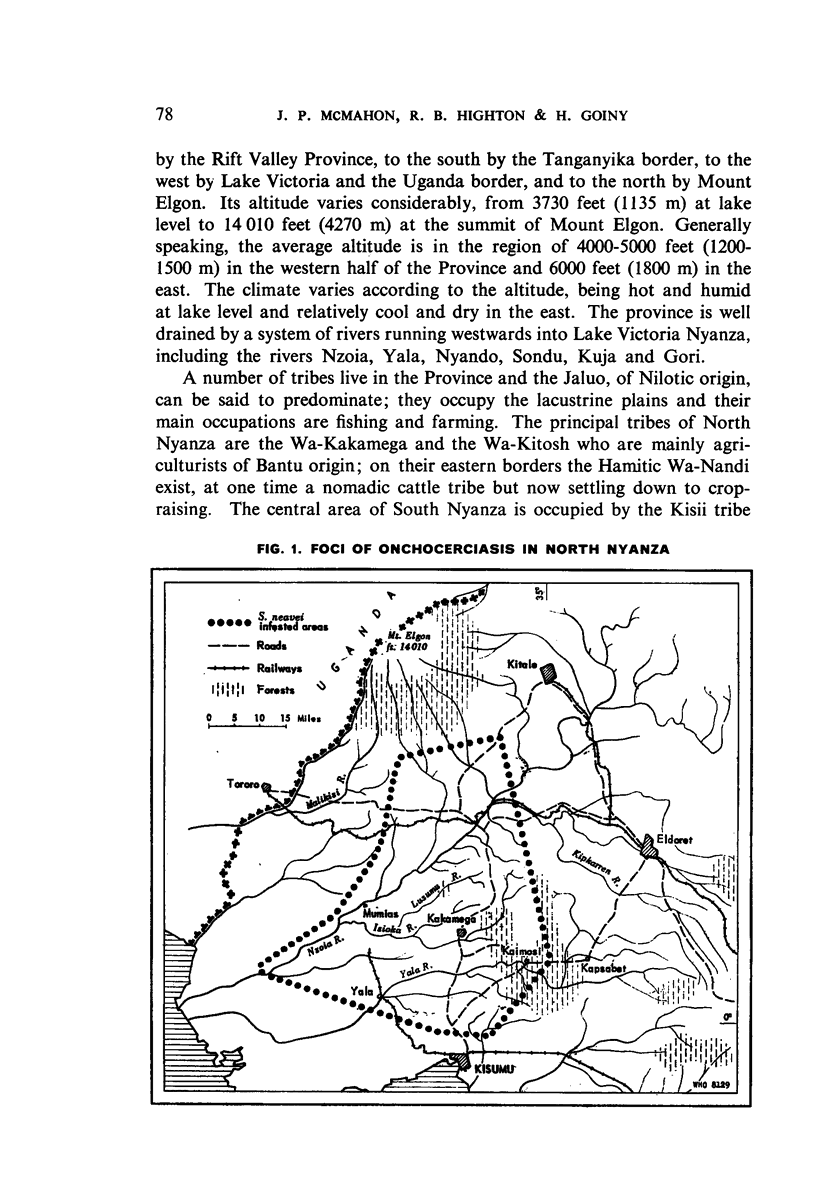
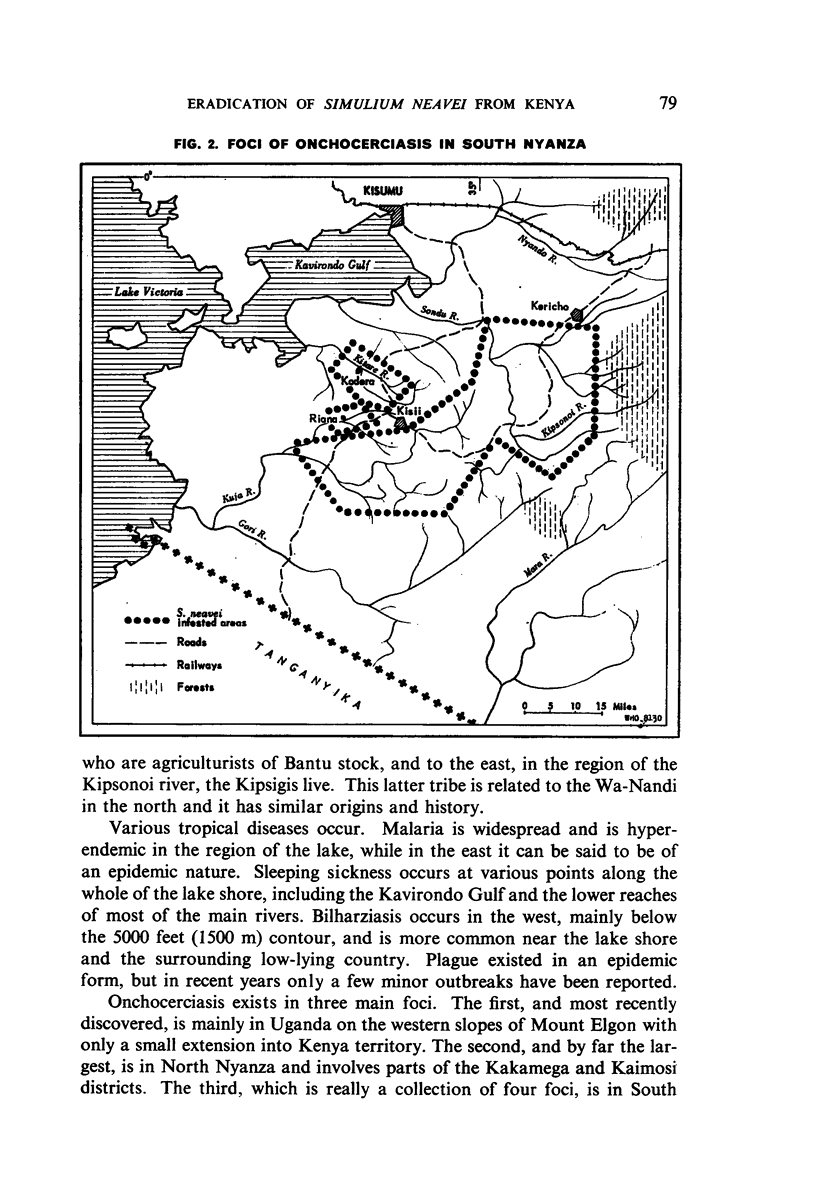
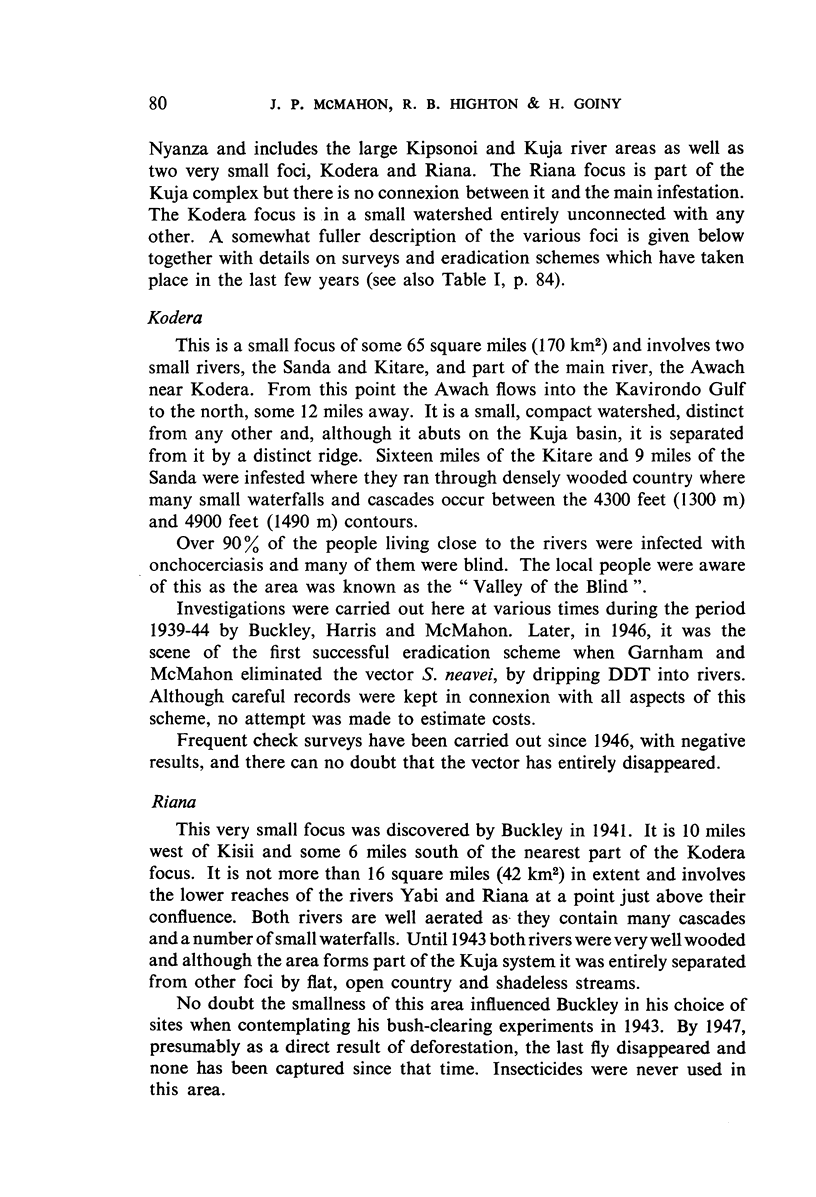
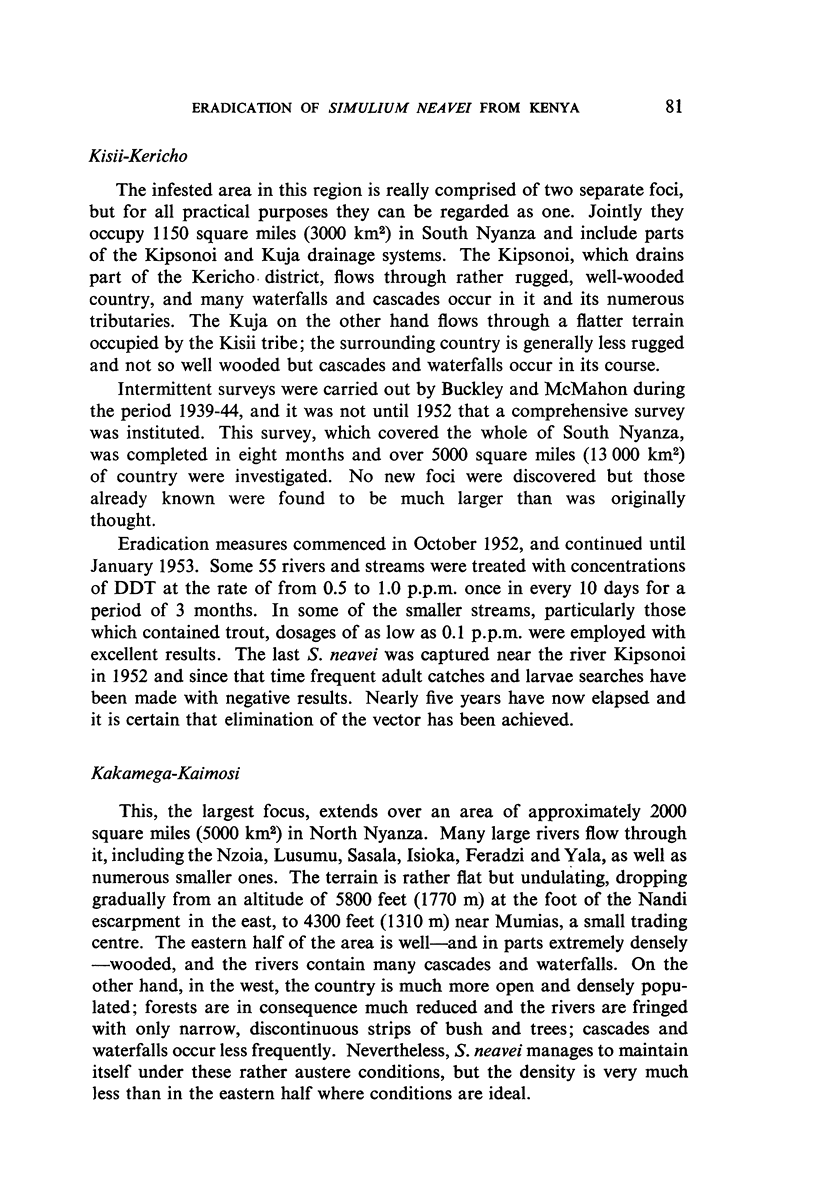
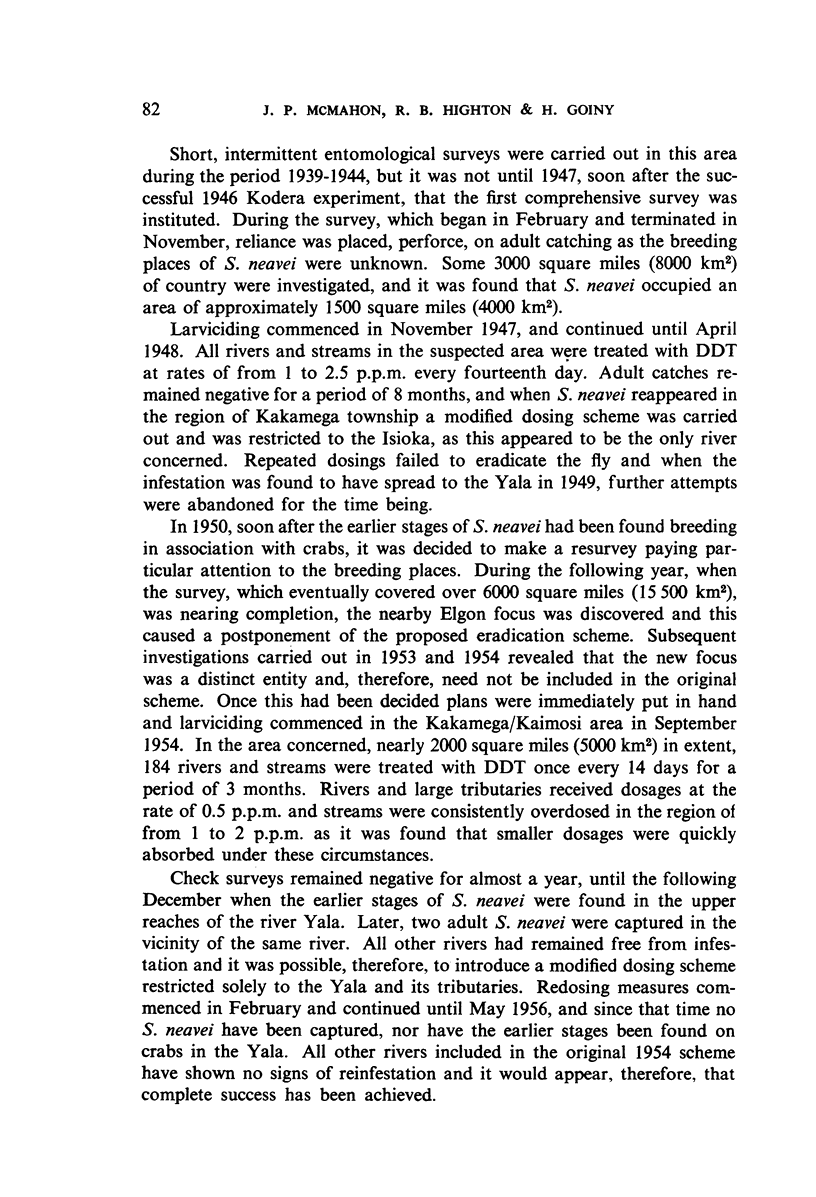
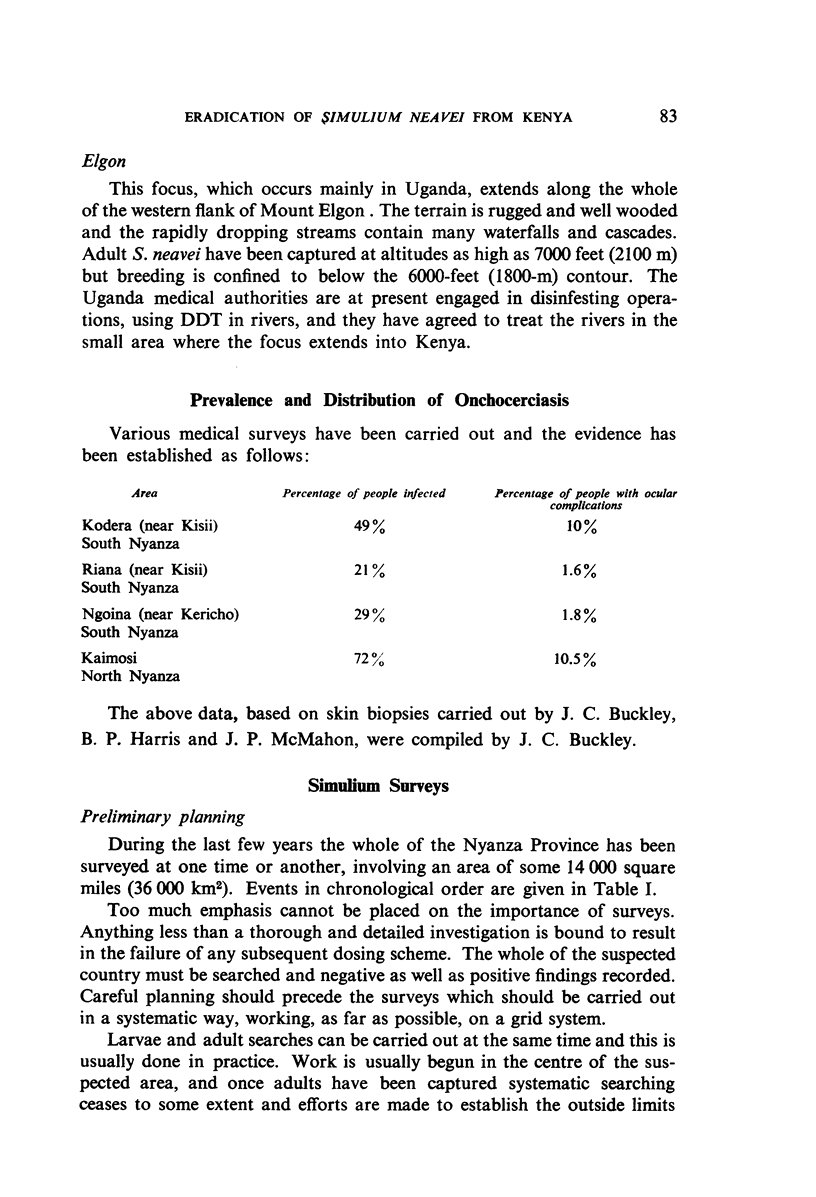
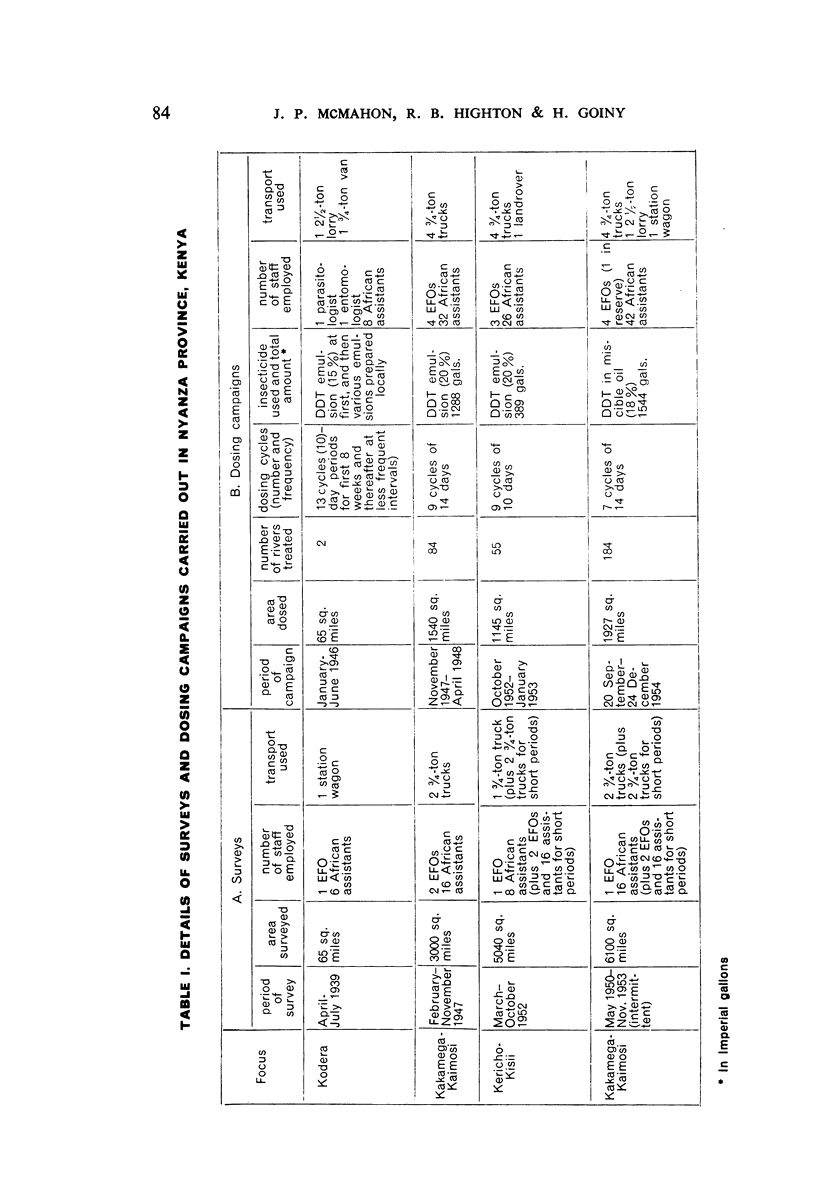
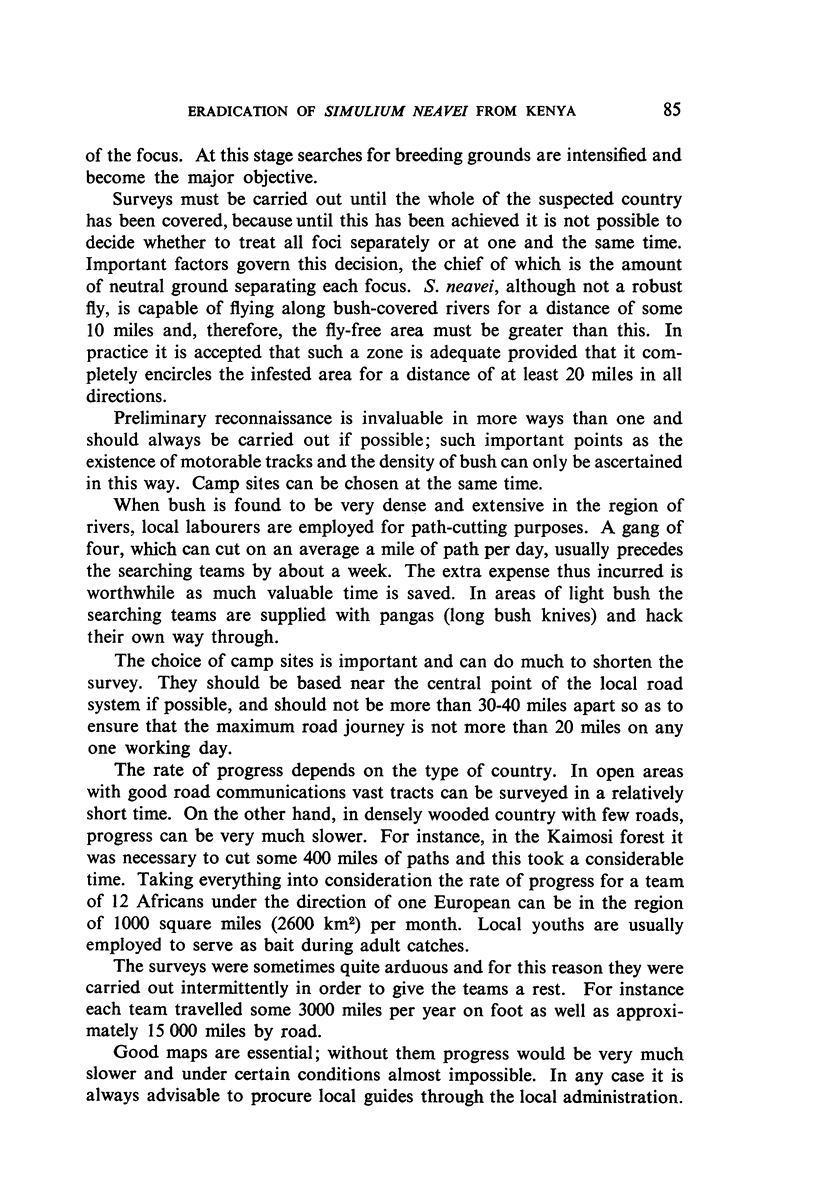
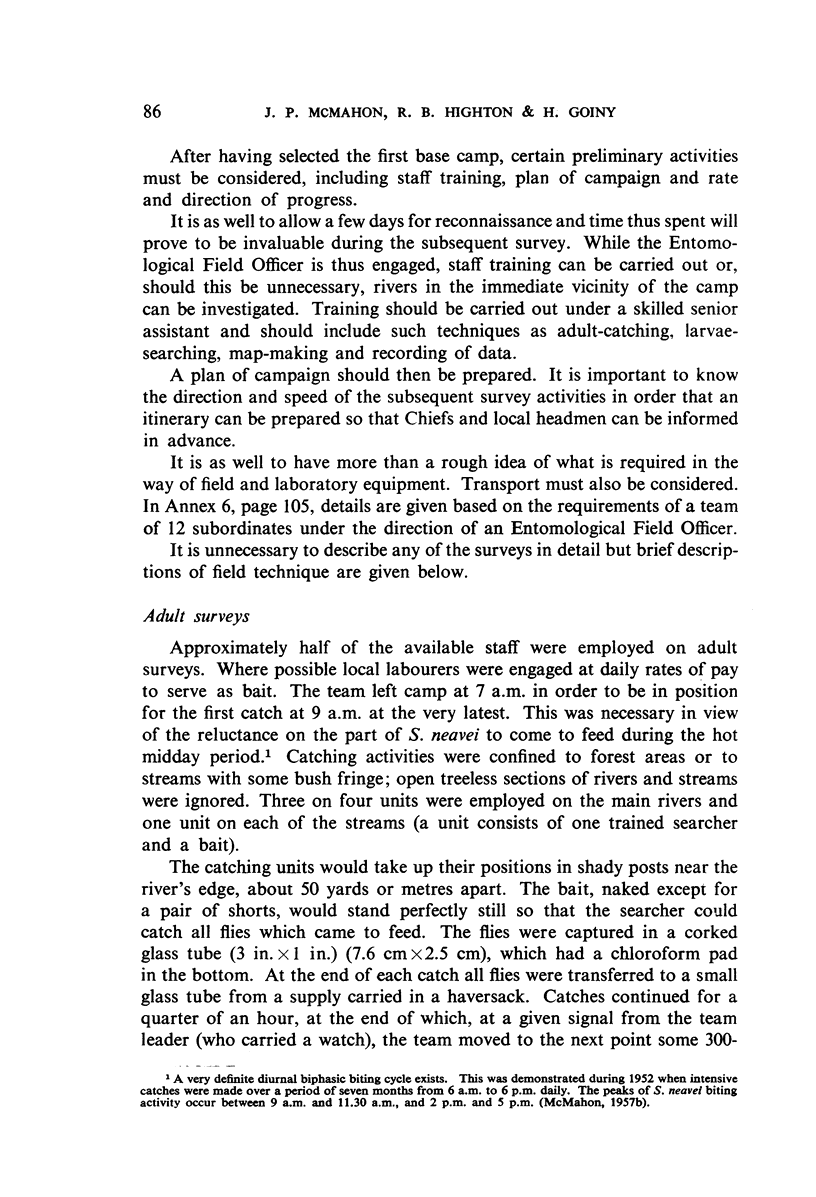
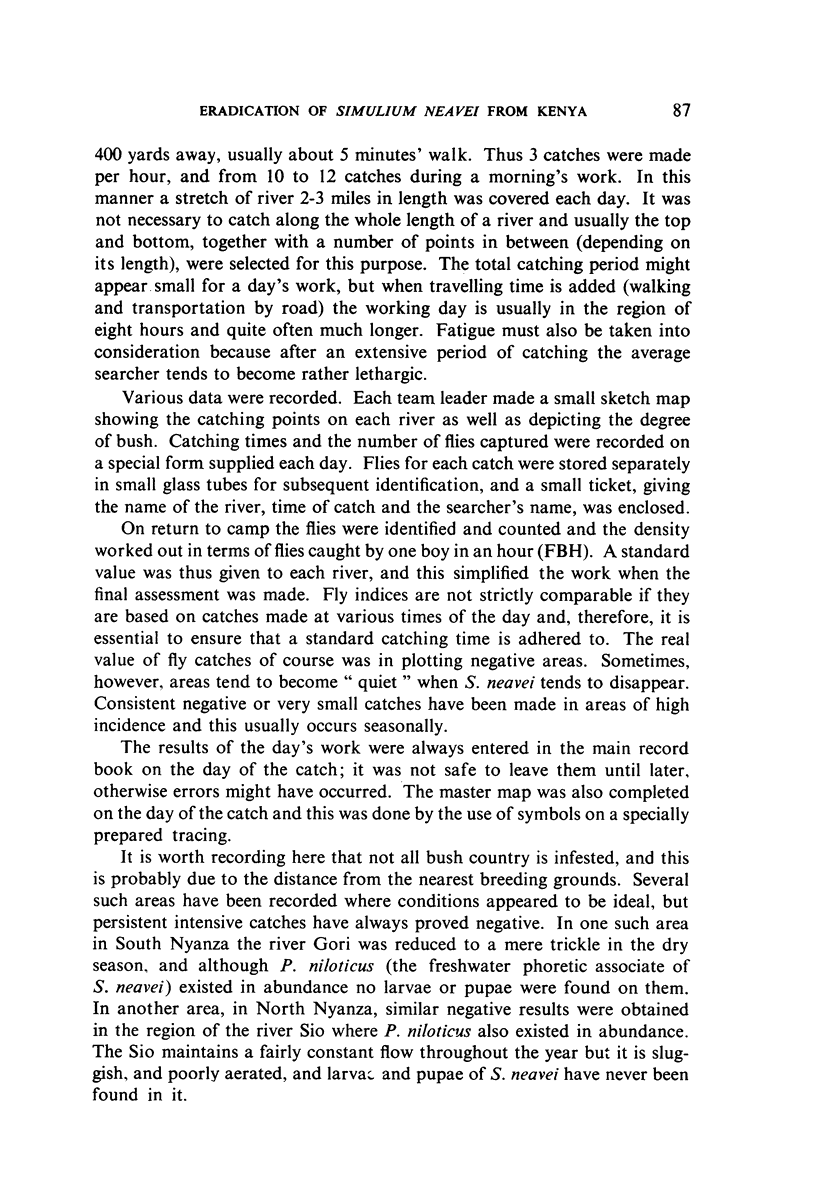
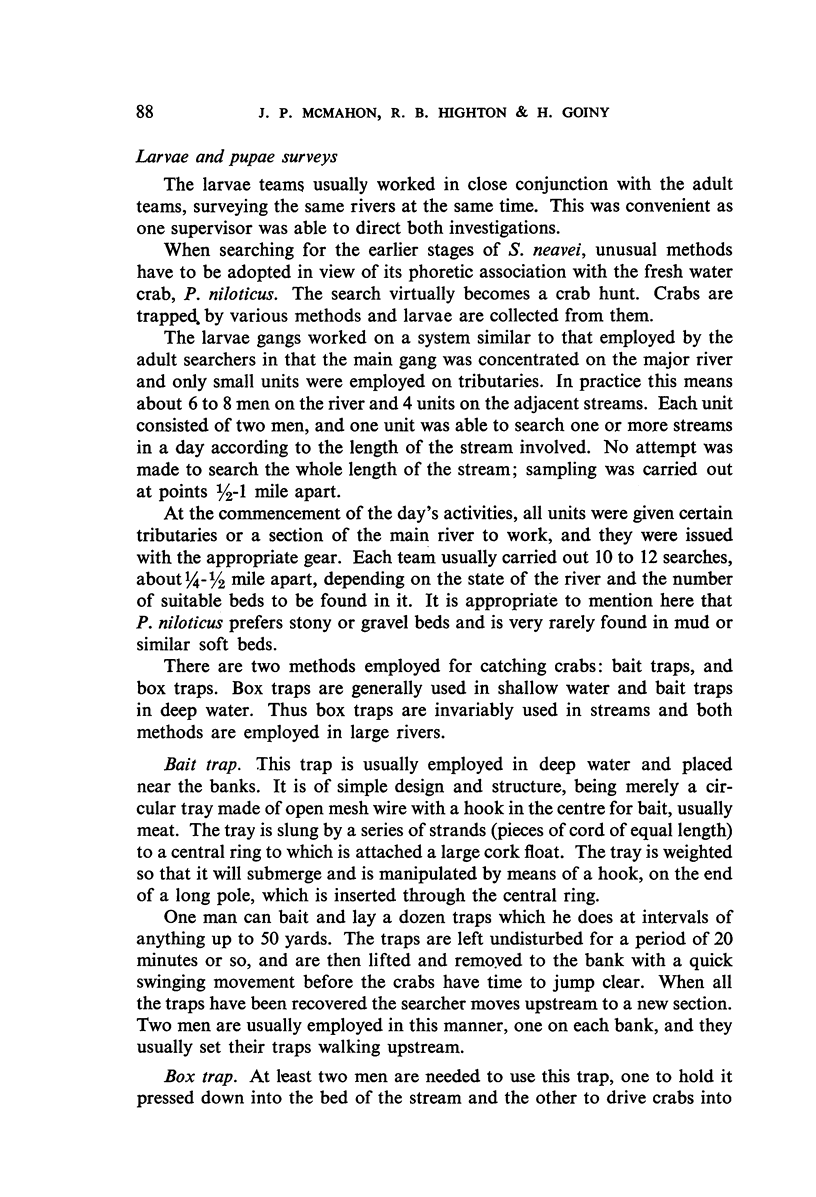
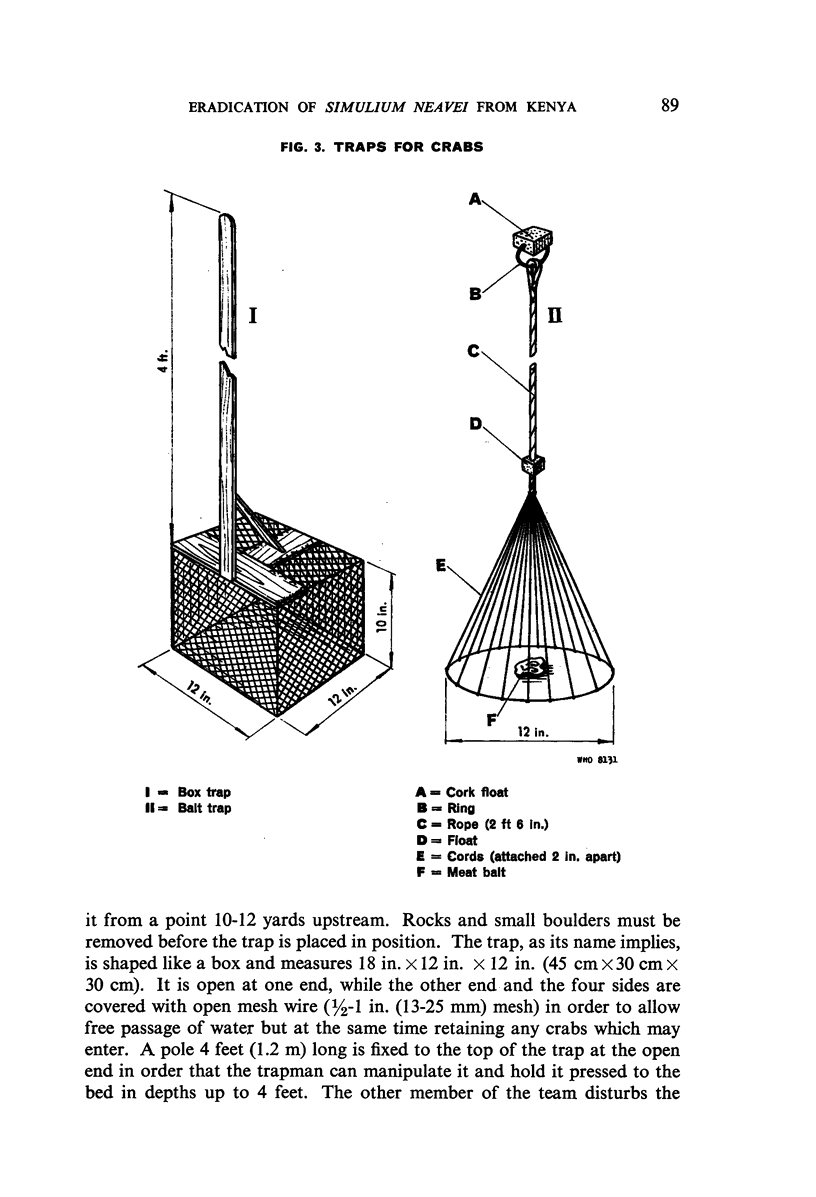
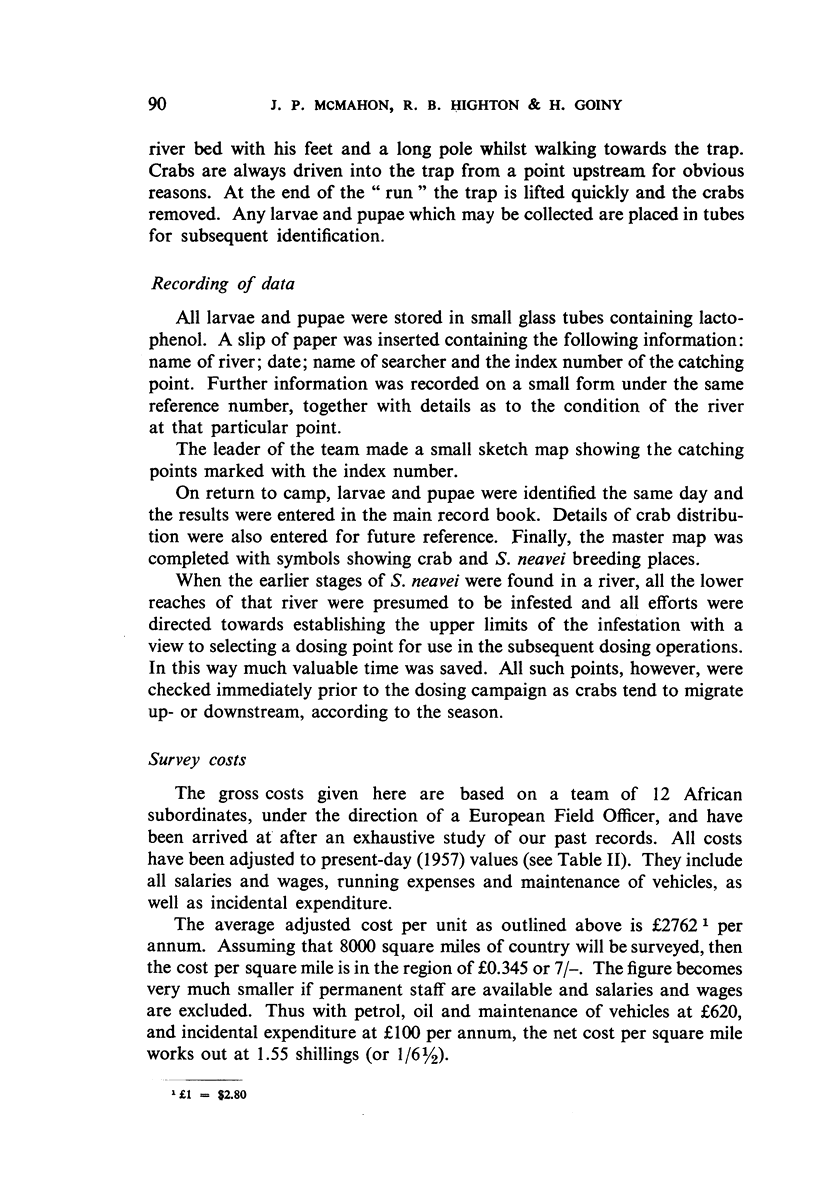
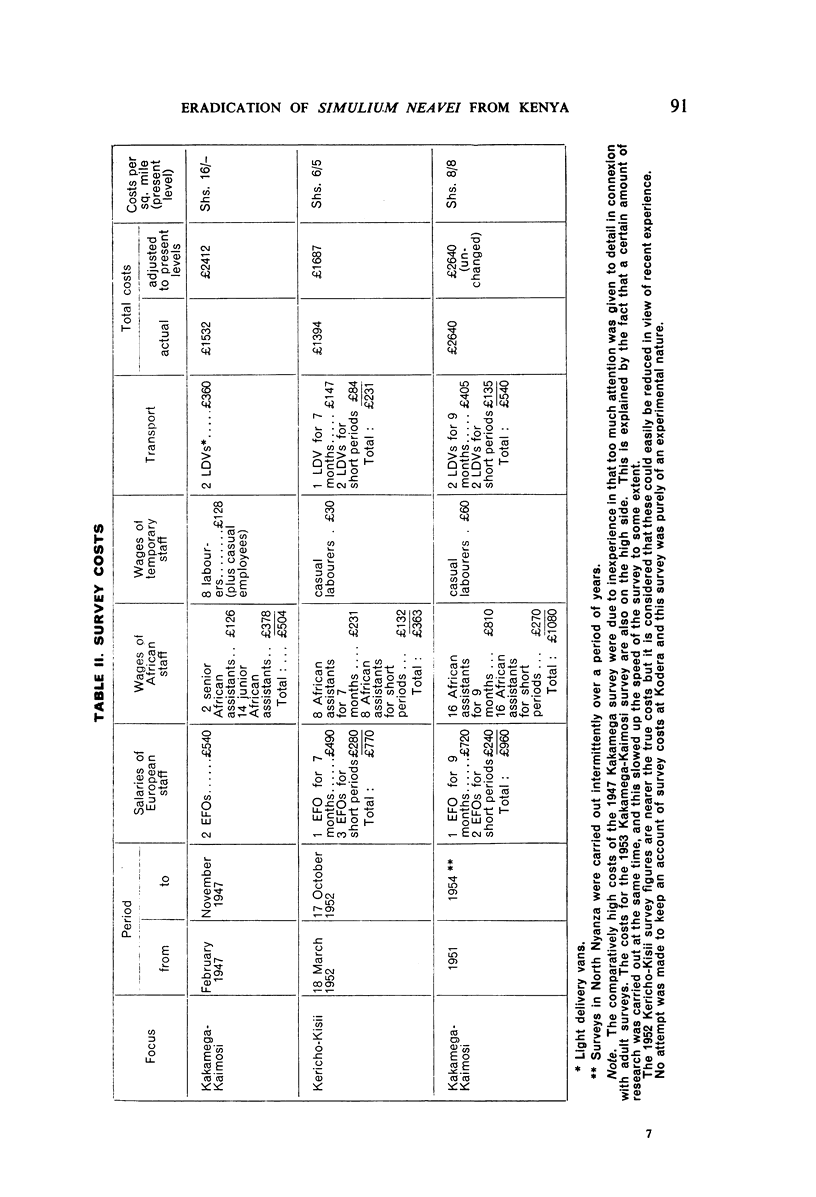
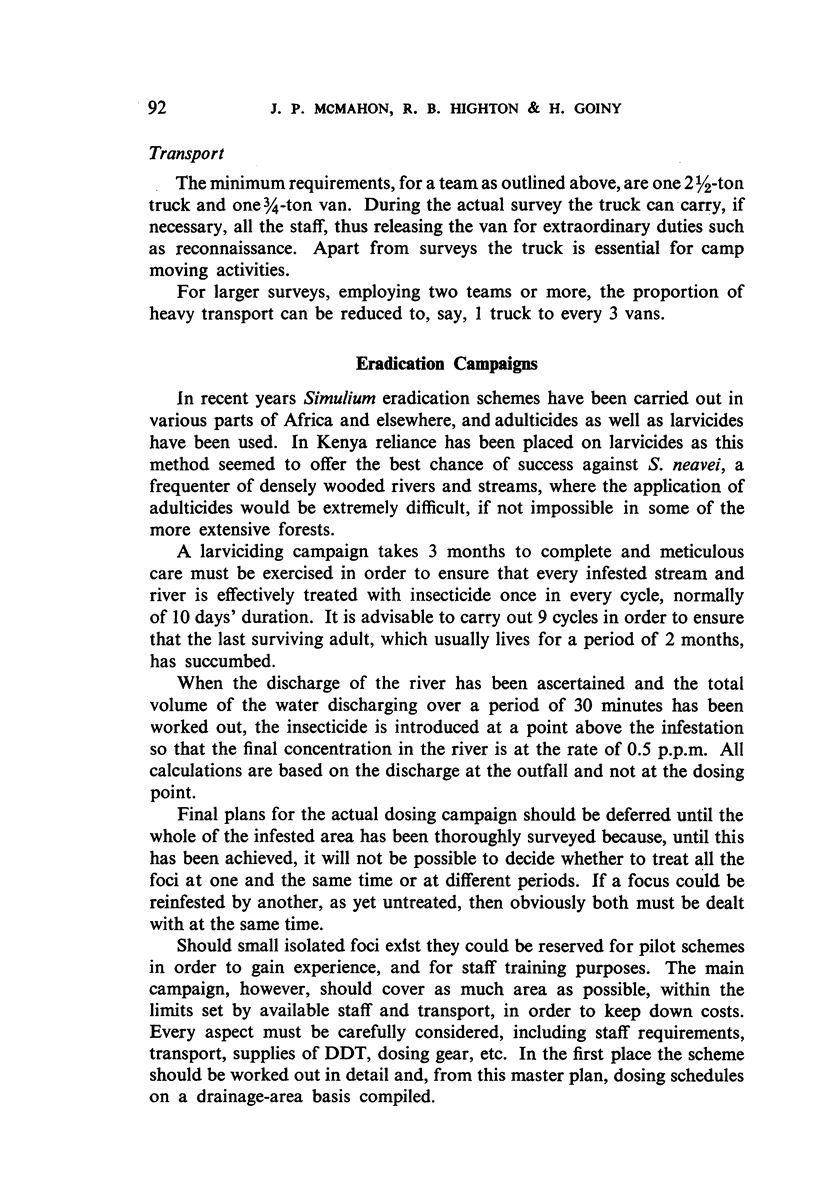
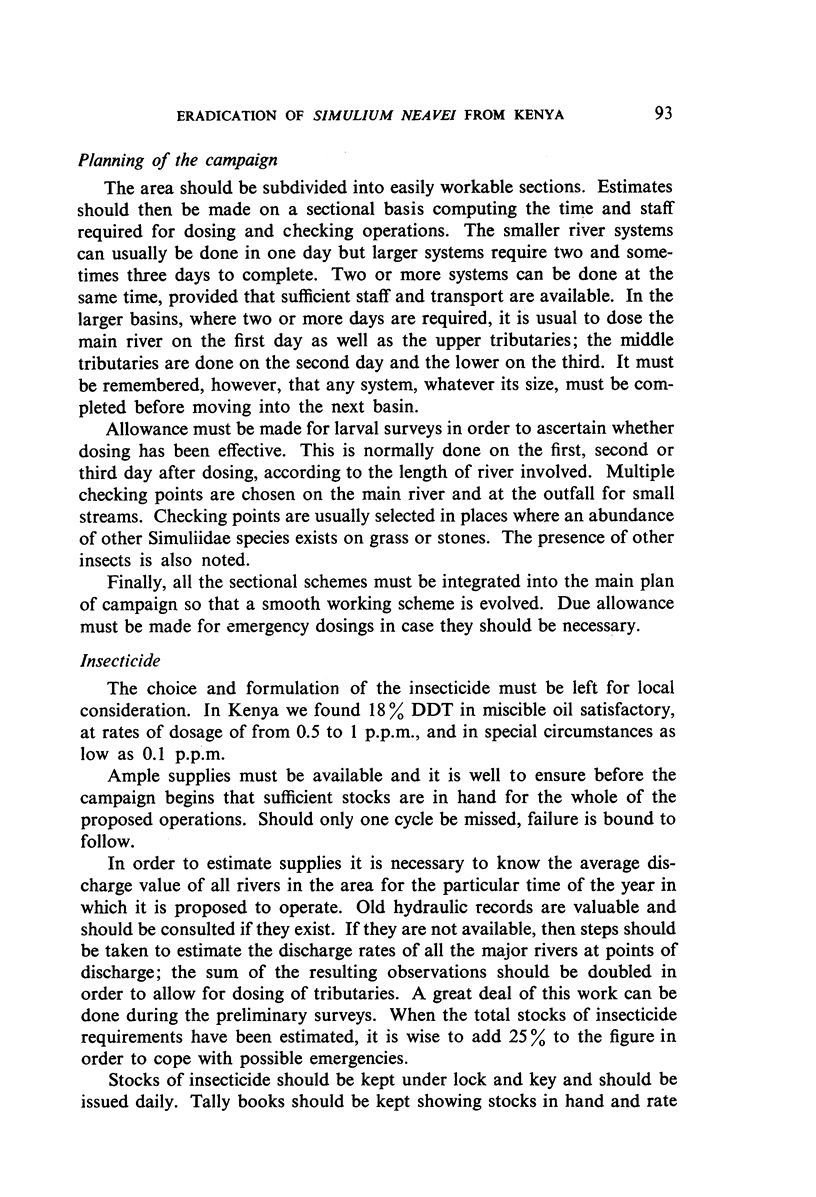
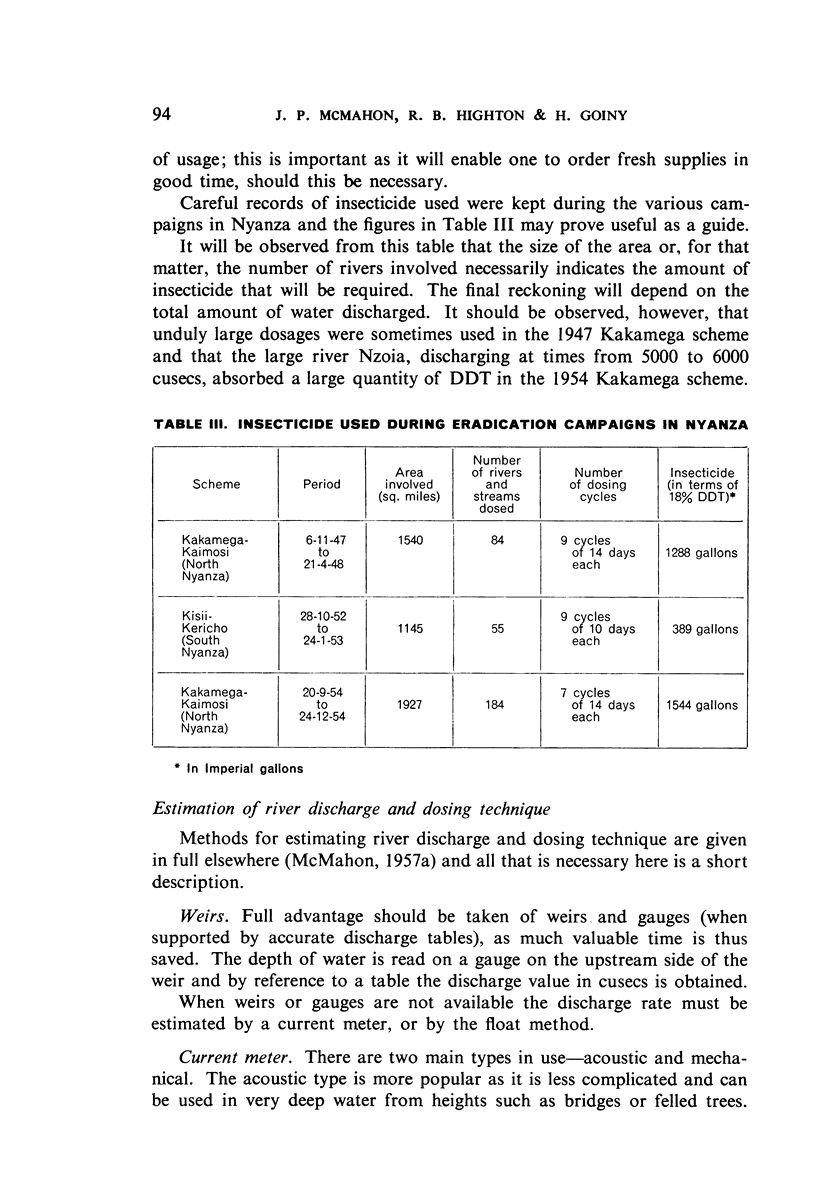
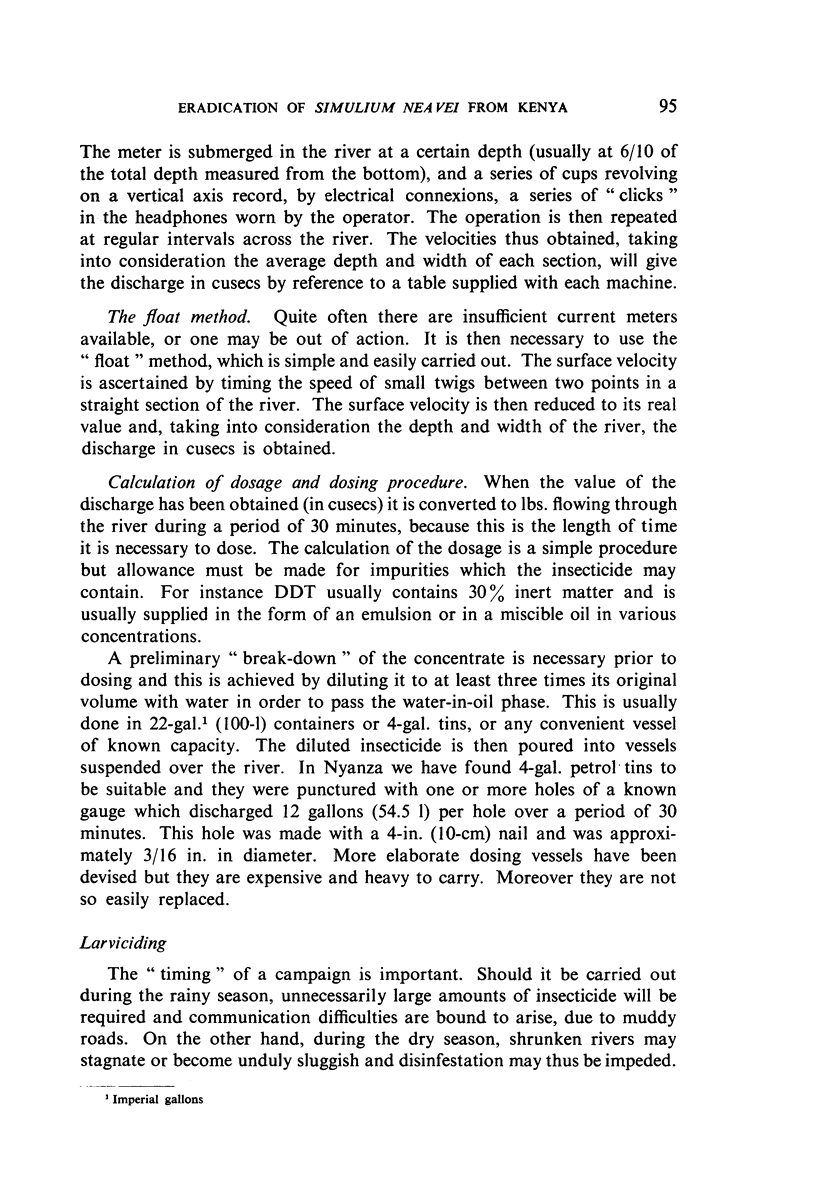
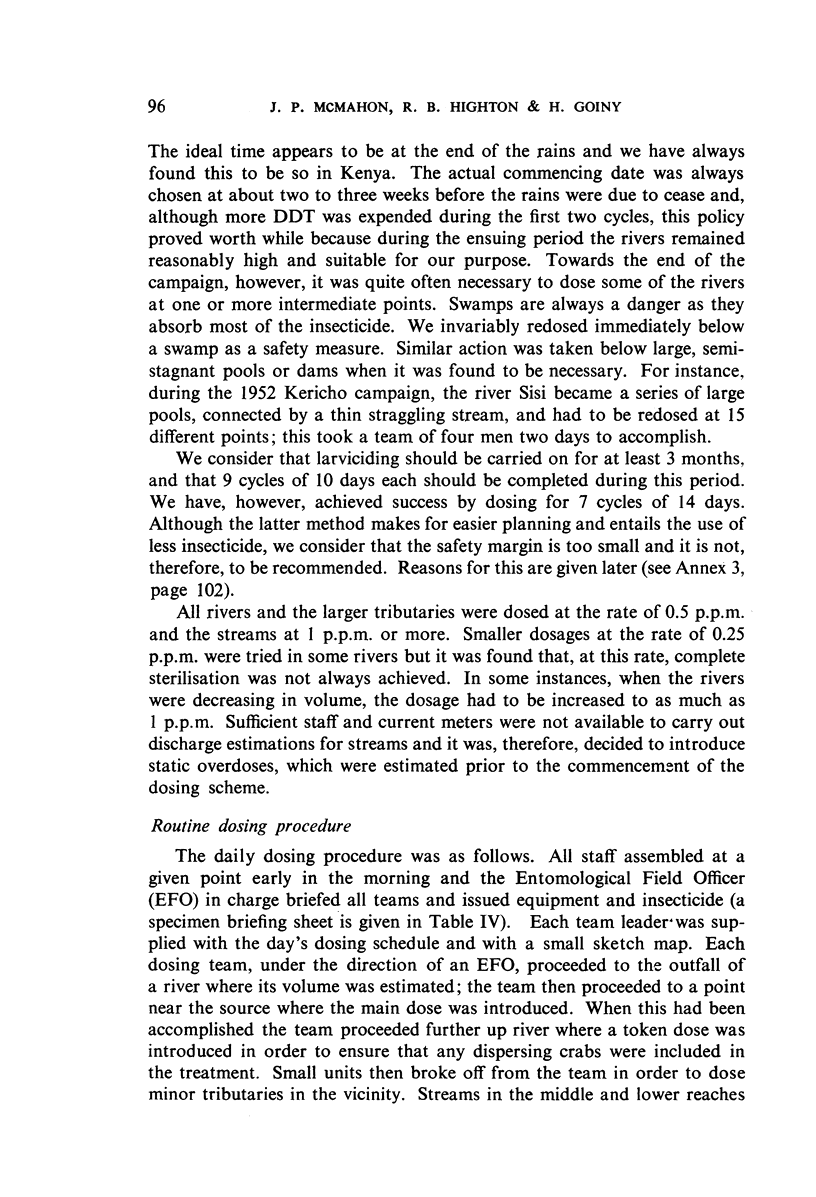
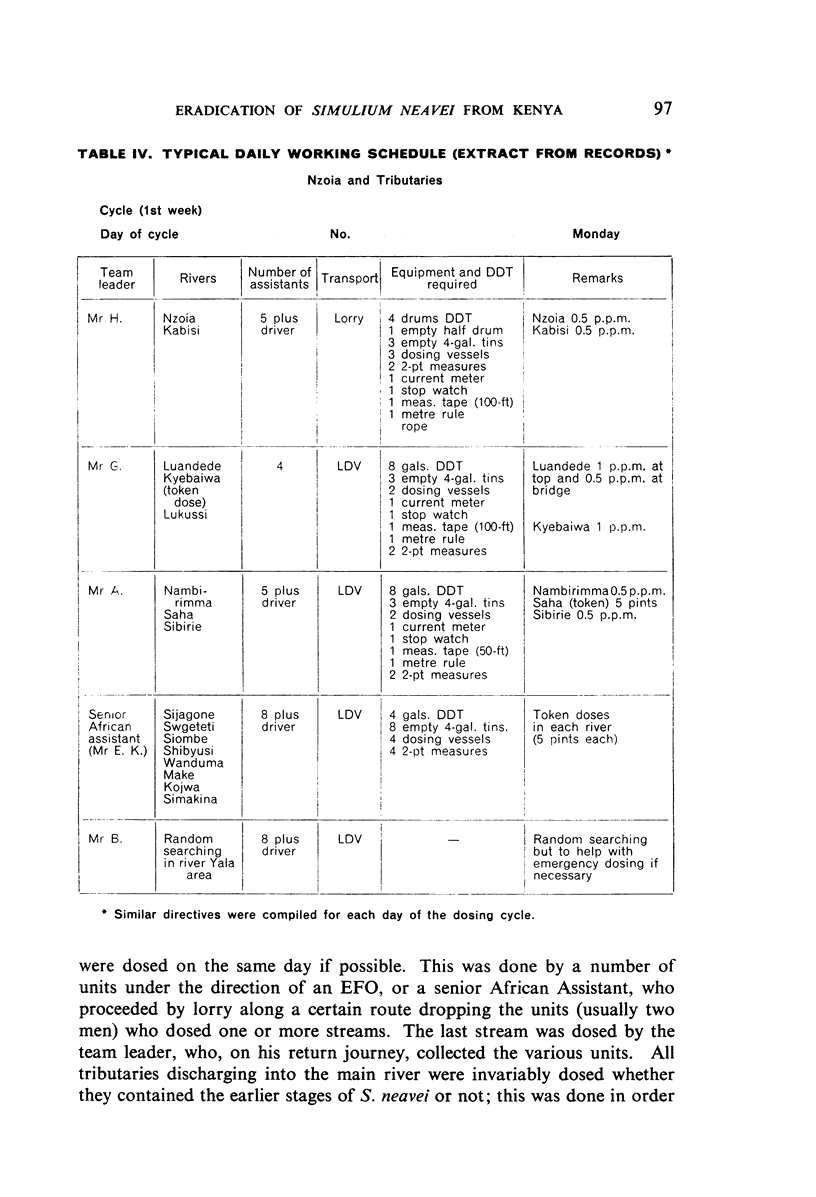
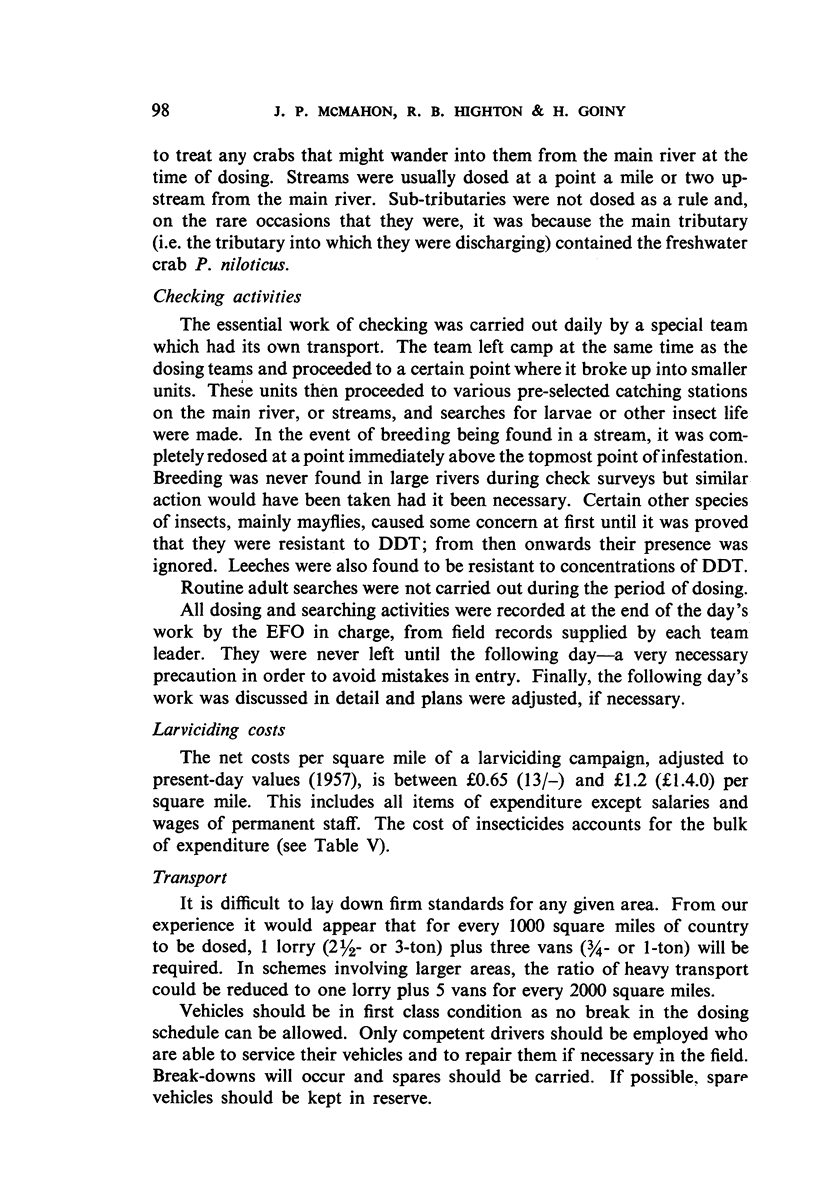
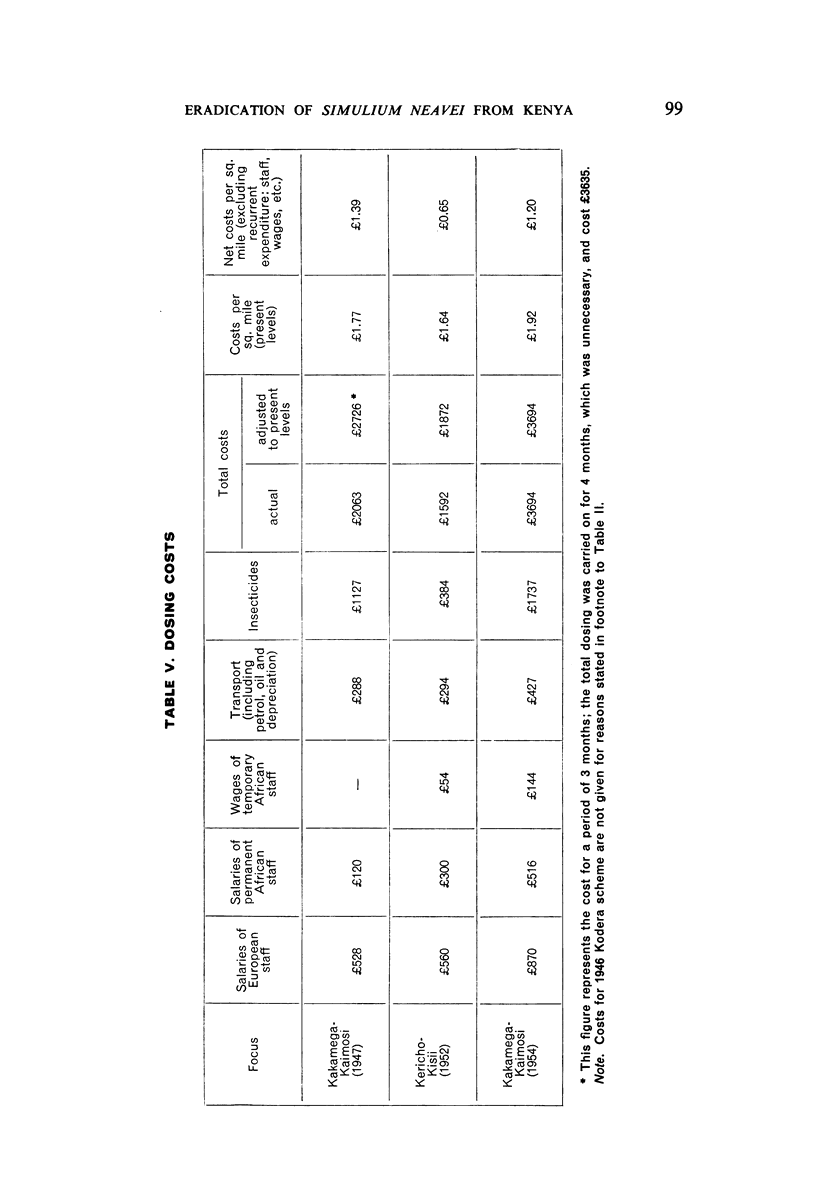
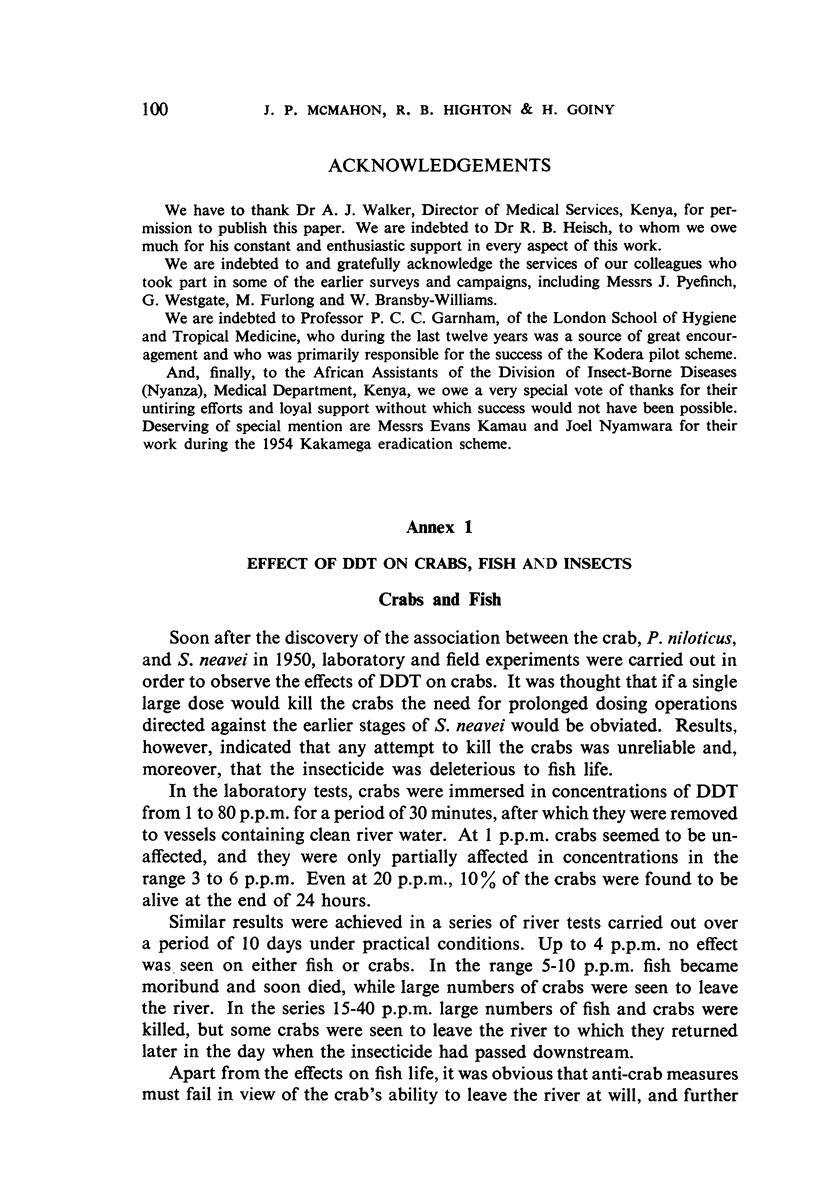
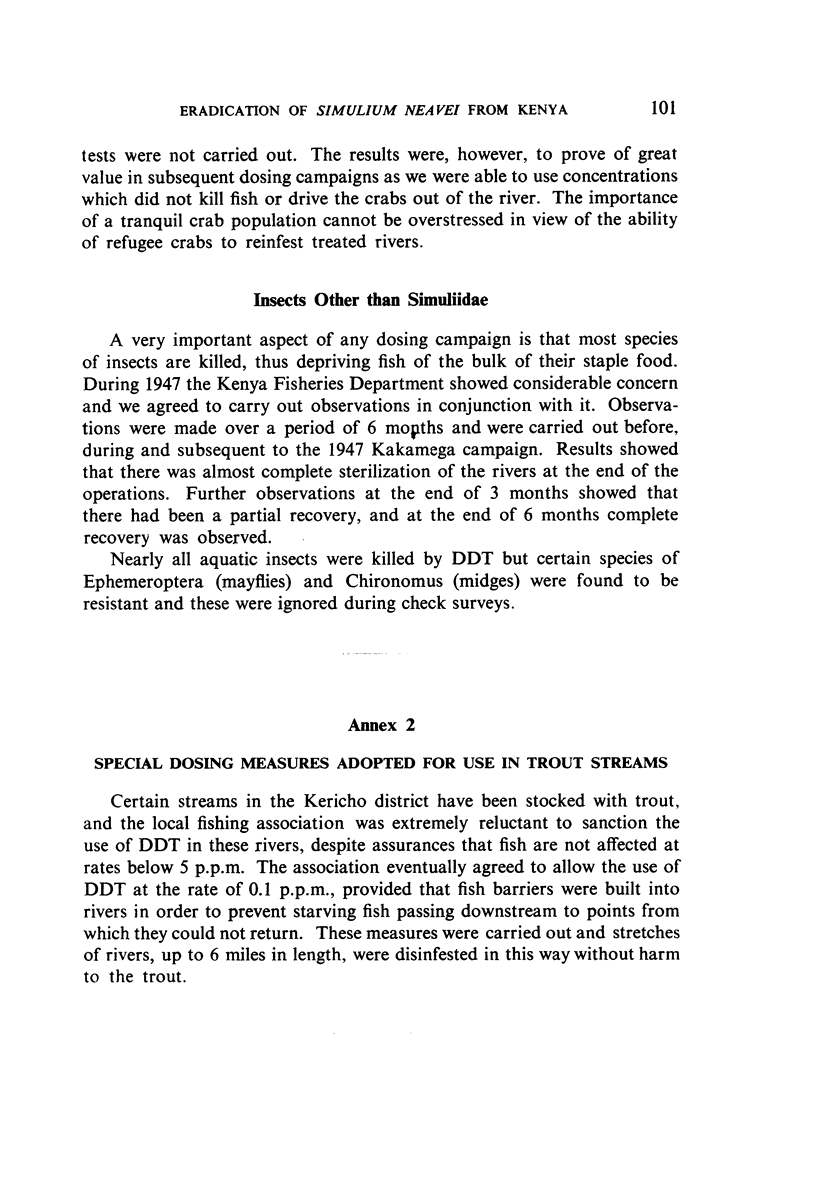
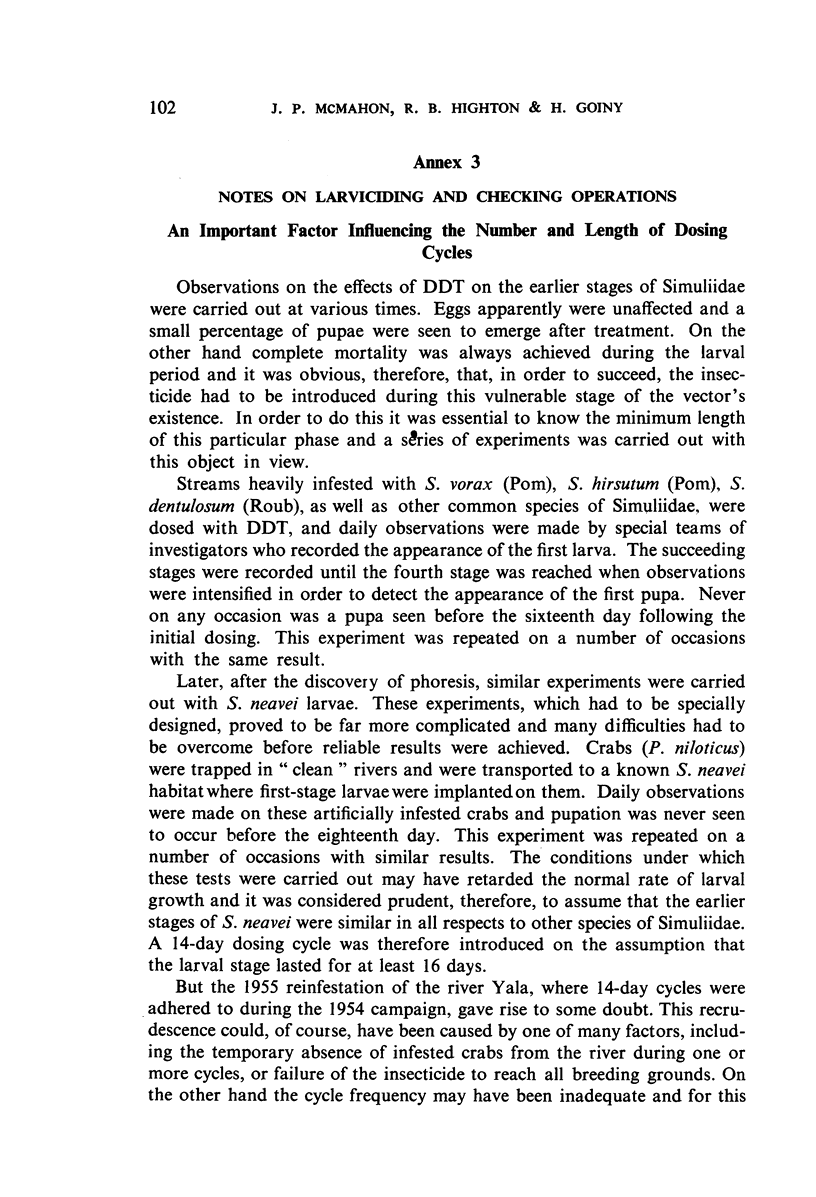
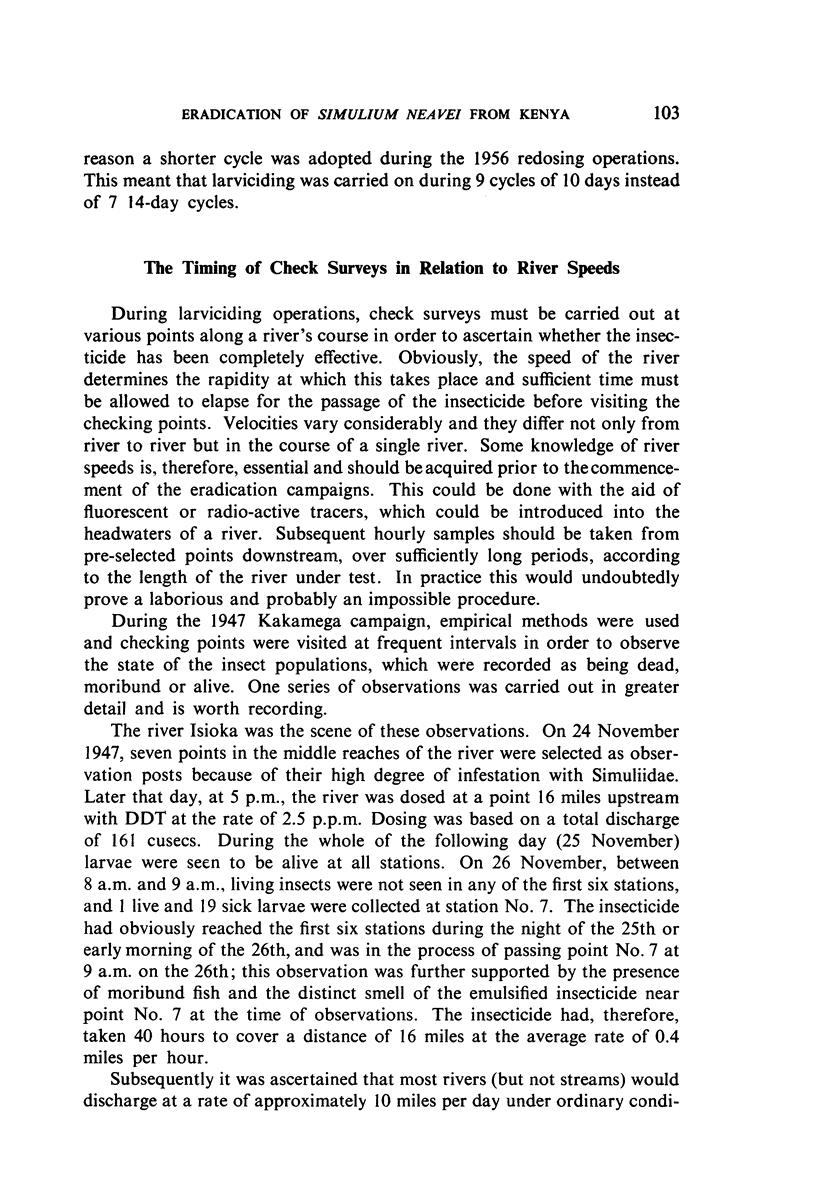
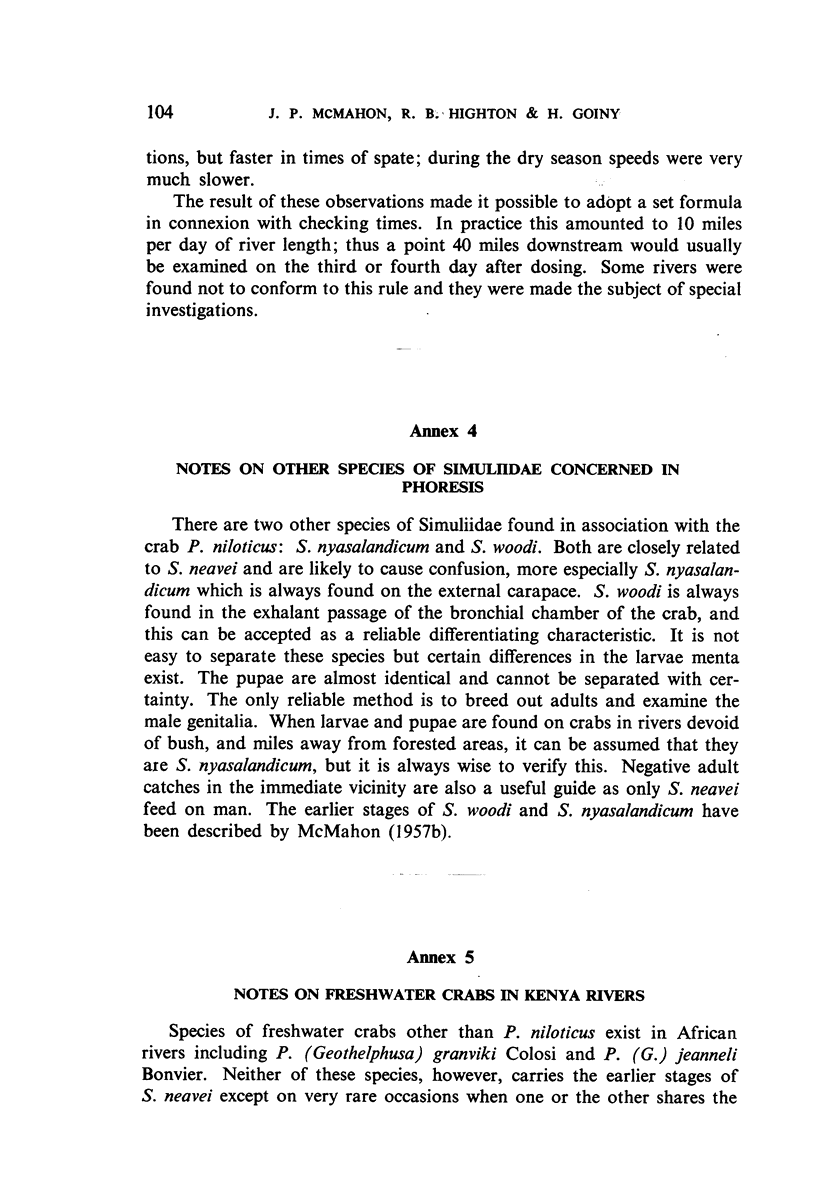
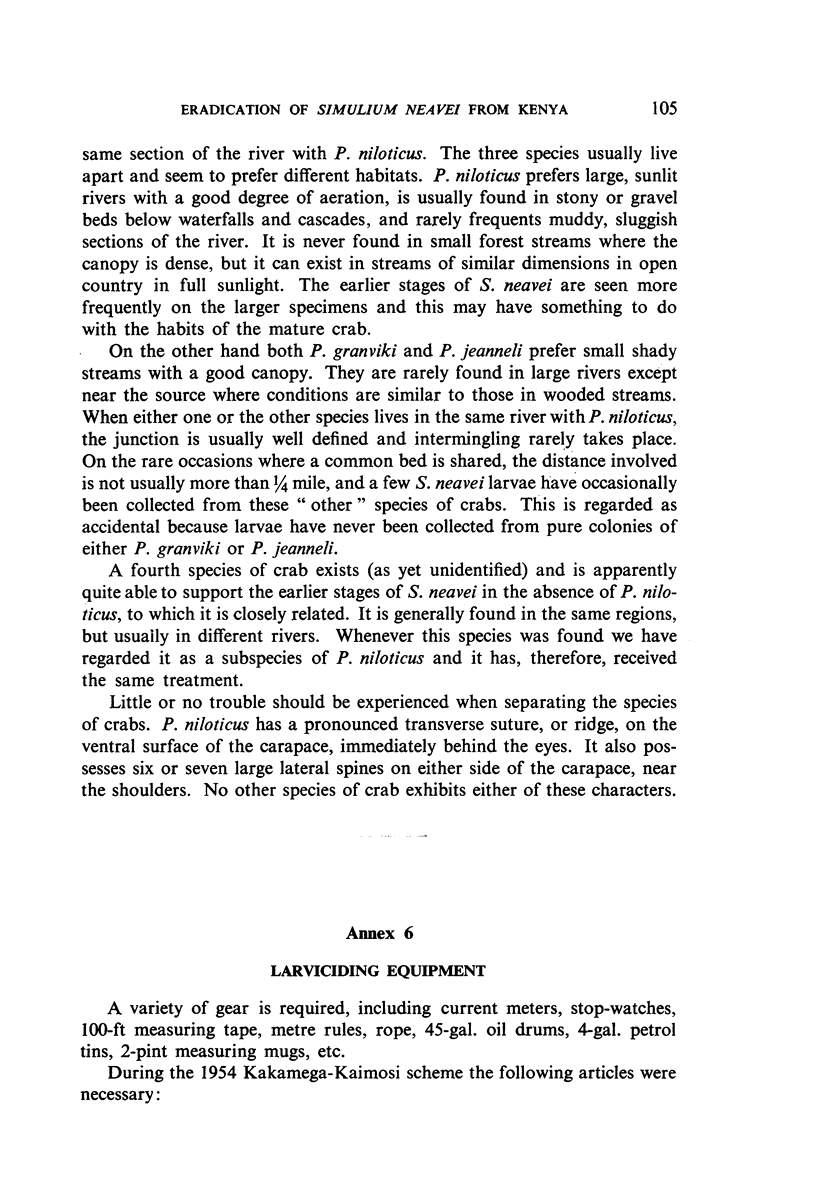
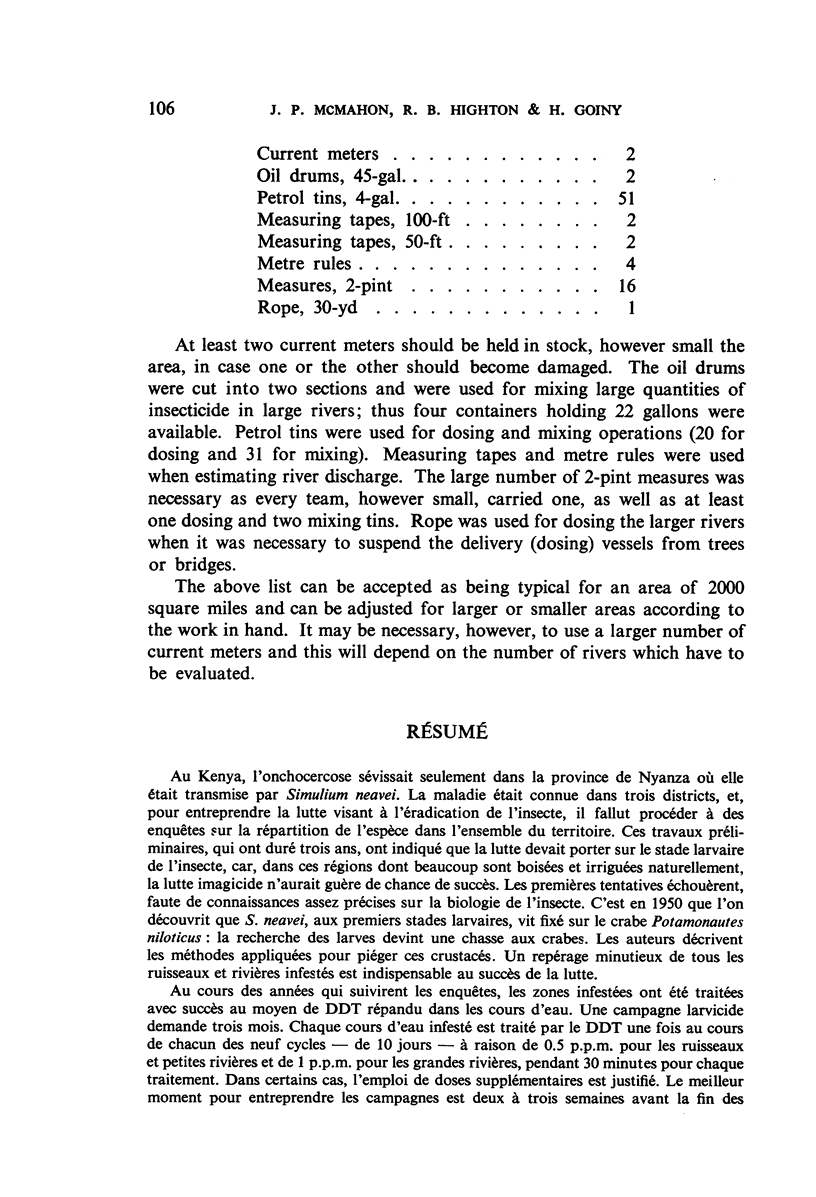
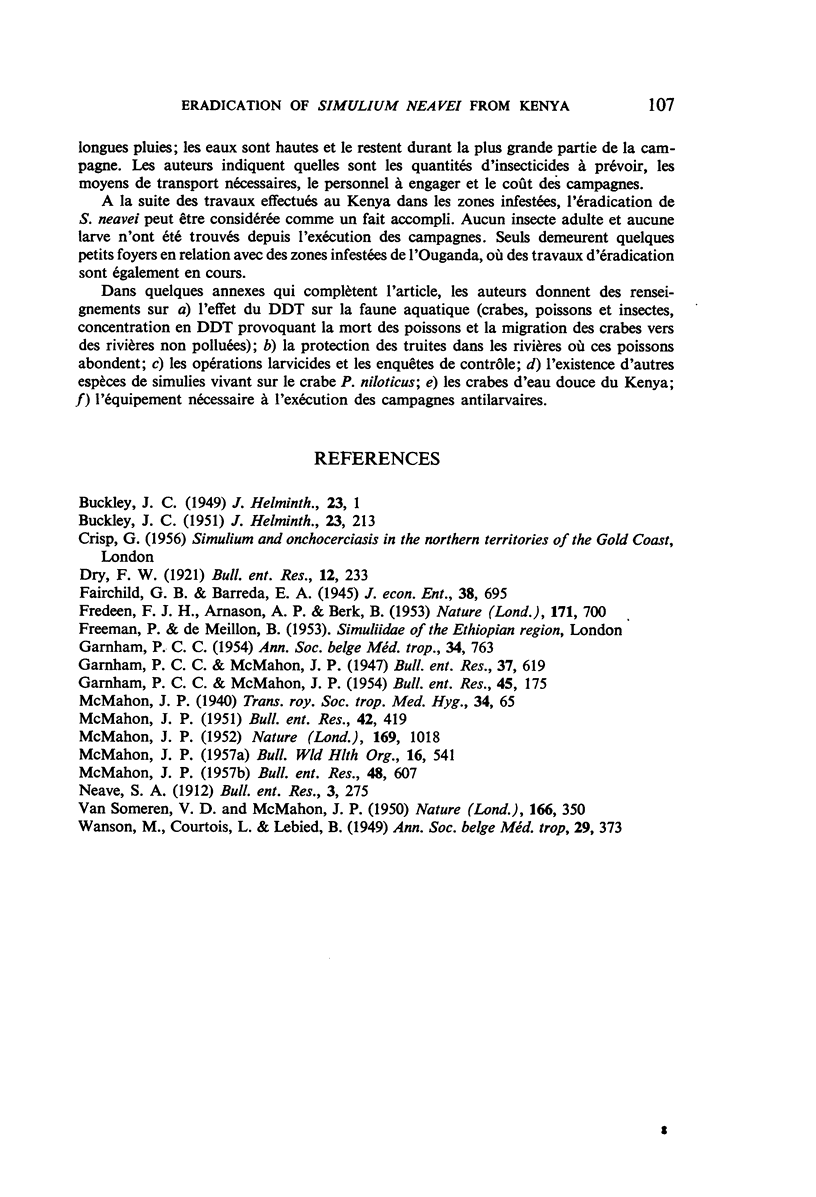
Selected References
These references are in PubMed. This may not be the complete list of references from this article.
- FREDEEN F. J., ARNASON A. P., BERCK B. Absorption of DDT on suspended solids in river water and its role in black-fly control. Nature. 1953 Apr 18;171(4355):700–701. doi: 10.1038/171700b0. [DOI] [PubMed] [Google Scholar]
- McMAHON J. Phoretic association between Simuliidae and crabs. Nature. 1952 Jun 14;169(4311):1018–1018. doi: 10.1038/1691018a0. [DOI] [PubMed] [Google Scholar]
- WANSON M., COURTOIS L., LEBIED B. L'éradication du Simulium damnosum Théobald à Léopoldville. Ann Soc Belg Med Trop (1920) 1949;29(3):373-403, ch. [PubMed] [Google Scholar]
- van SOMEREN V. D., McMAHON J. Phoretic association between Afronurus and Simulium species, and the discovery of the early stages of Simulium neavei on freshwater crabs. Nature. 1950 Aug 26;166(4217):350–351. doi: 10.1038/166350a0. [DOI] [PubMed] [Google Scholar]


